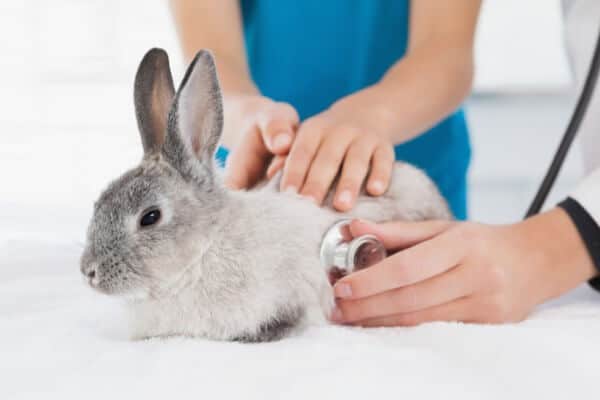february, 2025

Course Details
Week 1 Nutrition and Husbandry at Home Dietary requirements Environmental needs Incorrect feeding problems Obesity Tempting rabbits to eat hay Learning objectives After completion of this week, participants should be able
Course Details
Week 1
Nutrition and Husbandry at Home
Dietary requirements
Environmental needs
Incorrect feeding problems
Obesity
Tempting rabbits to eat hay
Learning objectives
After completion of this week, participants should be able to:
Discuss the nutritional requirements of rabbits and why these are important
Recognise problems related to incorrect or poor diet and the implications these have on health and welfare
Appreciate that rabbits need large enclosures, which allow them to exhibit normal behavioural patterns. These are important from a health and welfare perspective. We will examine what rabbits need to be happy
Understand obesity and how to implement a weight loss programme for rabbits
List various methods to encourage picky rabbits to eat hay!
Week 2
Preventative Healthcare
Neutering – when and why
Vaccination – myxomatosis, RVHD1 and RVHD2
Endo and ectoparasites
Flea treatment
Worming treatment
Learning objectives
After completion of this week, participants should be able to:
Understand the best time to neuter rabbits
Appreciate why we should be neutering all rabbits – health, welfare and behavioural benefits
Know all the latest vaccination information and background on these fatal viruses
Know which endo and ectoparasites can affect rabbits and the clinical signs
Discuss if rabbits require prophylactic flea and worm treatment, and if so, when?
Week 3
Implementing Rabbit Clinics and Client Evenings in Practice
Setting up rabbit clinics
Running client evenings
What to discuss
Health checking
Benefits to the practice
Learning objectives
After completion of this week, participants should be able to:
Understand that client education is imperative but there is more than one way to deliver this
Discover the benefits of both rabbit clinics and client evenings
Know what should be discussed and the clinical examination to help detect problems
Appreciate why being a rabbit friendly practice is of benefit to you!
Week 4
Common Medical Diseases
Gastrointestinal stasis and blockages
Dental disease
Urinary tract disease
E. cuniculi
Myxomatosis and RVHD
Learning objectives
After completion of this week, participants should be able to:
Describe the common conditions that rabbits present to veterinary practices and require hospitalisation
Ascertain if a rabbit has gastrointestinal stasis or a blockage – differences and treatments
Identify clinical signs and causes
List the treatment options
Describe preventative measures to help ensure rabbits remain healthy
Week 5
Rabbits in the Practice
Reducing stress
Hospitalisation
Gold standard rabbit nursing
Medicating
Fluid therapy and blood sampling
Supportive feeding
Learning objectives
After completion of this week, participants should be able to:
Understand that everything that we do to rabbits whilst they are hospitalised induces some degree of stress. Learn ways to reduce this, which are easily achieved in practice
Appreciate that hospitalised rabbits can require in-depth care which can be daunting. Learn how to effectively nurse rabbits to ensure optimum care
Learn how to medicate rabbits in an effective and safe manner is imperative, as well as how to syringe feed, deliver fluid therapy and acquire successful blood samples with minimal stress to the rabbit or nurse!
Week 6
Rabbit Anaesthesia and Analgesia
Signs of pain
Analgesia options
Making rabbit anaesthesia safer
Monitoring under general anaesthesia
Learning objectives
After completion of this week, participants should be able to:
Review rabbit anaesthesia and learn how to build up your confidence, including pre op, intra op and post op care. Anaesthetising rabbits can be overwhelming but doesn’t need to be!
Know the clinical signs rabbits show when they are in pain, and learn how to use the Rabbit Grimace Scale
Review the analgesics available for rabbit medicine
Understand the parameters monitored during anaesthesia – including CO2, SPO2,reflexes, HR, RR and BP readings
The course will be fully tutored by Claire Speight and will consist of 15 hours of CPD given in various formats, including tutorials, tasks, case studies, forum discussions and quizzes. This course is tutored for 6 weeks, followed by a two week extension of untutored ‘catch up’ time, before the course officially ends.
All delegates will then have unlimited lifetime access to the learning material for future reference
Time
February 17 (Monday) - March 28 (Friday)
Location
Online
Speaker
Claire SpeightA1 Clinical Coach, C&G Cert Nursing Exotic Species, RVN Senior Nurse, Kettering Vets4Pets



0 Comments